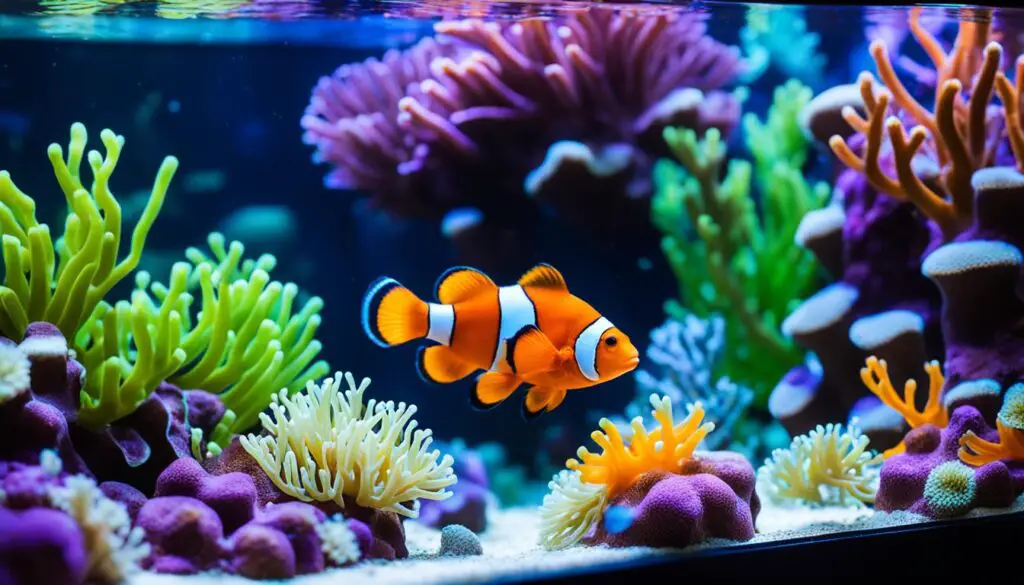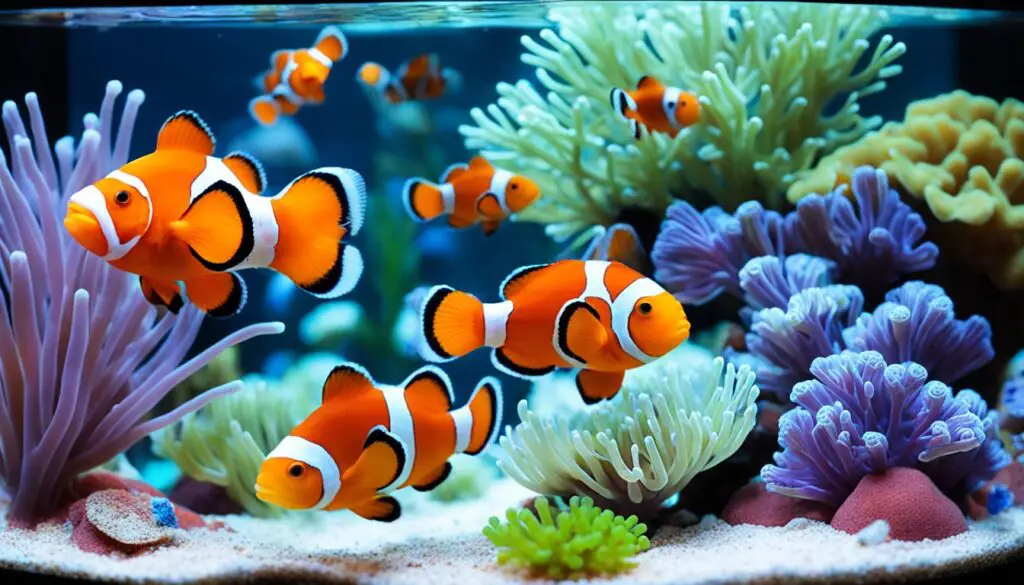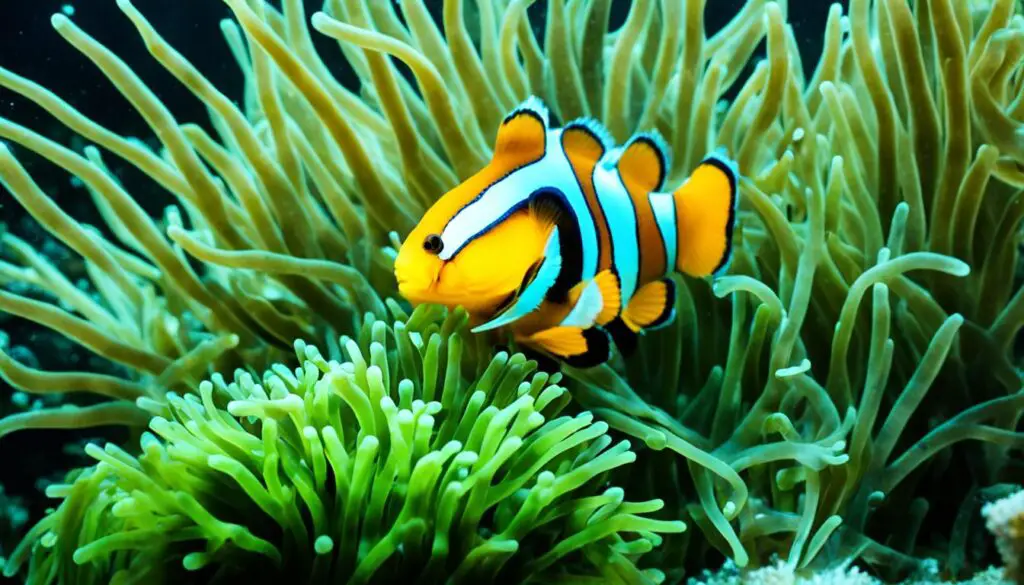Anemone Adaptation Mechanisms: Diverse Marine Environments
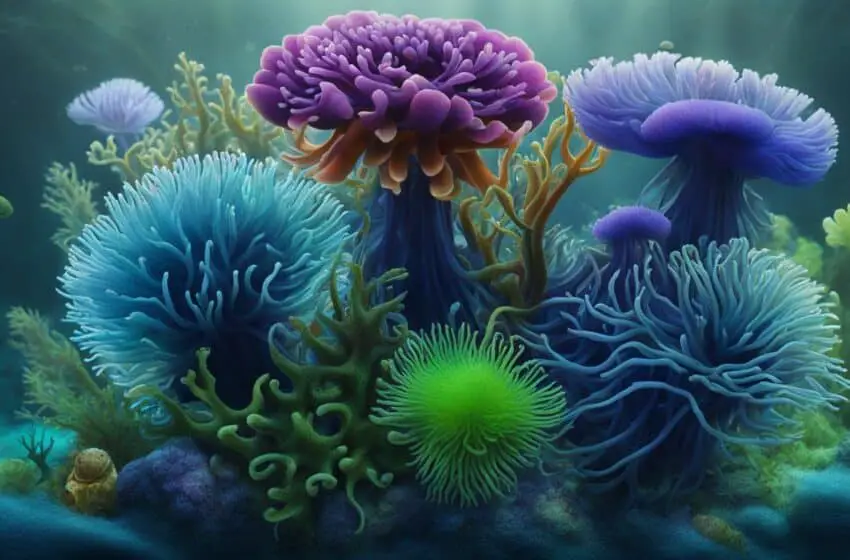
Anemone Adaptation Mechanisms: Sea anemones are fascinating marine creatures that have evolved various adaptation mechanisms to survive in diverse environments. From benthic zones to deep-sea hydrothermal vents, anemones exhibit remarkable traits and genetic alterations that contribute to their successful adaptation. In this article, I will delve into the intricate world of anemone adaptation mechanisms, shedding light on their survival strategies and evolutionary traits.
Key Takeaways:
- Anemones have developed specific genetic alterations and expanded gene families to adapt to vent environments in deep-sea hydrothermal vents.
- Physiological and morphological adaptations allow anemones to thrive in benthic zones, such as littoral areas.
- Anemones possess mechanisms to detoxify compounds like hydrogen sulfide and heavy metals, enhancing their survival in challenging environments.
- Deep-sea anemones have evolved genetic mechanisms to cope with high hydrostatic pressure, hypoxia, and high concentrations of hydrogen sulfide and heavy metals.
- Understanding anemone adaptation mechanisms provides valuable insights into marine ecology and evolution.
Physiological and Morphological Adaptations of Anemones in Benthic Zones
Anemones in benthic zones, including littoral areas, have developed various physiological and morphological adaptations to survive in their specific habitats. These adaptations enable them to thrive in challenging conditions and play a crucial role in their ability to maintain homeostasis.
One notable adaptation seen in benthic anemones is their temperature preference. These organisms have the ability to regulate their body temperature by moving to areas where the temperature is most suitable for their survival. This behavior helps them avoid extremes of temperature that could be detrimental to their physiological processes.
In addition to temperature preference, anemones in benthic zones also exhibit morphological adaptations that enhance their survival. For example, they have the ability to increase the surface area of their gills, enabling them to extract oxygen efficiently even in hypoxic conditions. This adaptation allows them to thrive in environments where oxygen availability is limited.
“The physiological and morphological adaptations of anemones in benthic zones highlight their incredible ability to survive and thrive in harsh conditions.”
Furthermore, anemones in benthic zones have developed mechanisms to detoxify compounds such as hydrogen sulfide and heavy metals. In the presence of hydrogen sulfide, anemones possess the ability to oxidize it into less toxic forms, protecting themselves from its harmful effects. They can also sequester heavy metals, preventing them from accumulating to toxic levels in their tissues.
This combination of physiological and morphological adaptations equips anemones in benthic zones with the necessary tools to withstand the challenges of their environment. It is a testament to their remarkable ability to adapt and survive in diverse ecological niches.
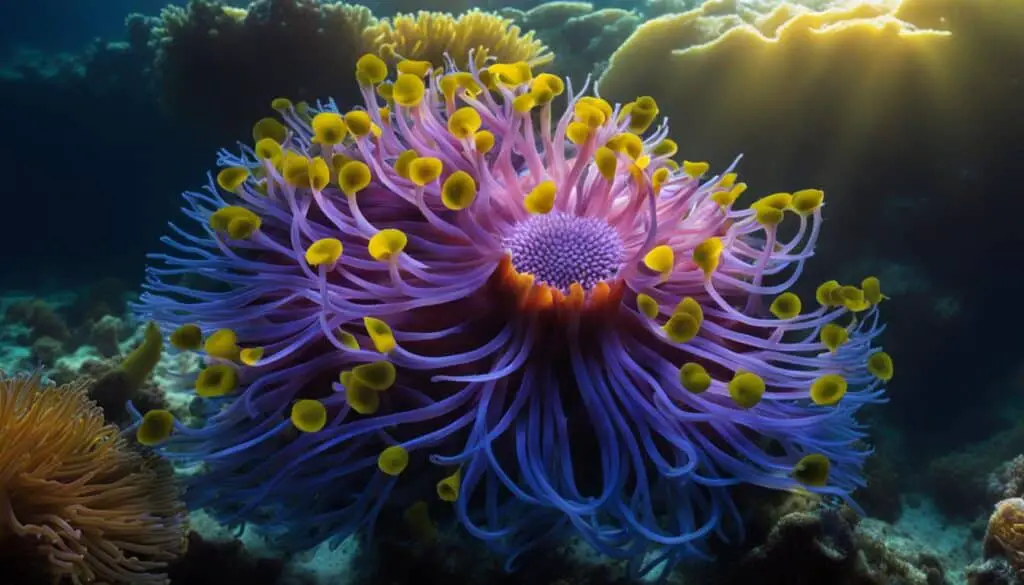
Comparison of Physiological and Morphological Adaptations in Different Anemone Species
| Anemone Species | Physiological Adaptations | Morphological Adaptations |
|---|---|---|
| Species A | Temperature preference | Gill surface area enlargement |
| Species B | Oxygen extraction efficiency | Increased tentacle length |
| Species C | Hydrogen sulfide detoxification | Thicker epidermal layers |
The table above provides a comparison of physiological and morphological adaptations in different anemone species. It highlights the diversity of adaptations and the specific traits that enable each species to thrive in their respective benthic environments.
Deep-Sea Adaptations of Anemones in Hydrothermal Vents
Anemones living in deep-sea hydrothermal vents face extreme conditions that require specialized adaptation mechanisms to ensure their survival. These unique environments are characterized by high hydrostatic pressure, chronic hypoxia, and high concentrations of hydrogen sulfide and heavy metals. Through evolutionary processes, anemones have developed genetic mechanisms that allow them to cope with these challenges.
One of the key adaptations observed in deep-sea anemones is the accumulation of cytoprotective solutes. These solutes help counteract the high hydrostatic pressure and maintain cellular integrity. Additionally, anemones adjust their lipid composition to ensure membrane fluidity, enabling proper functioning in the extreme conditions of the deep-sea environment.
Stabilizing the cytoskeleton is another essential adaptation mechanism of deep-sea anemones. This structural framework provides stability and support for cellular processes. By maintaining a stable cytoskeleton, anemones can withstand the physical stresses associated with deep-sea hydrothermal vents.
Furthermore, deep-sea anemones have evolved efficient translation mechanisms to ensure proper protein synthesis. This adaptation allows them to maintain essential cellular functions, even in regions characterized by limited oxygen availability. Comparative genomic analysis has revealed parallel evolutionary patterns among different species, indicating a common strategy for survival in the deep-sea hydrothermal vent ecosystem.
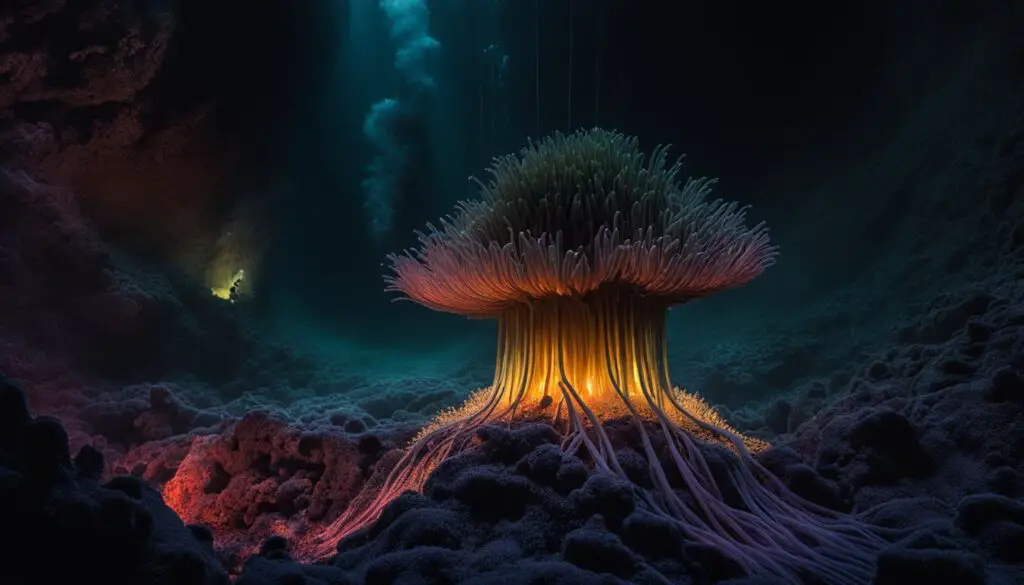
Table: Adaptation Mechanisms of Deep-Sea Anemones in Hydrothermal Vents
| Adaptation Mechanism | Description |
|---|---|
| Cytoprotective solute accumulation | Anemones accumulate specific solutes to counteract high hydrostatic pressure and maintain cellular integrity. |
| Adjustment of lipid composition | Anemones modify their lipid composition to ensure membrane fluidity in the extreme conditions of deep-sea hydrothermal vents. |
| Stabilization of the cytoskeleton | Anemones have adapted mechanisms to stabilize the cytoskeleton, providing structural support in high-pressure environments. |
| Efficient translation mechanisms | Deep-sea anemones have evolved efficient translation mechanisms to maintain essential cellular functions in regions with limited oxygen availability. |
Conclusion
The study of anemone adaptation mechanisms reveals the incredible resilience and versatility of these organisms in different environments. From complex molecular and genetic systems in deep-sea hydrothermal vents to remarkable physiological and morphological adaptations in benthic zones, anemones have evolved to live and prosper.
Understanding these adaptive mechanisms improves our understanding of anemone biology and marine ecology and evolution. By studying anemone adaptations’ complicated chemical pathways and genetic alterations, scientists can learn how animals adapt to changing environments.
More research is needed to understand how adaptation mechanisms affect anemones and other marine animals’ variety and resilience. By studying anemones’ adaption strategies, we can better comprehend the ocean’s complex life cycle and protect these fascinating organisms.
FAQ
What are some adaptation mechanisms of anemones?
Anemones exhibit various adaptation mechanisms, including changes in peroxisome, ubiquitin-mediated protein degradation, oxidative phosphorylation, endocytosis, and genetic information processing.
Where are anemones found?
Anemones are found in intertidal and shallow waters, as well as in deeper environments such as hydrothermal vents.
What are some physiological adaptations of anemones in benthic zones?
Anemones in benthic zones have developed physiological adaptations such as temperature preference, gill surface area enlargement for oxygen extraction in hypoxic conditions, and mechanisms for detoxifying compounds like hydrogen sulfide and heavy metals.
How do anemones survive in deep-sea hydrothermal vents?
Anemones in deep-sea hydrothermal vents have evolved specific genetic mechanisms to cope with high hydrostatic pressure, chronic hypoxia, and high concentrations of hydrogen sulfide and heavy metals. They accumulate cytoprotective solutes, adjust lipid composition to maintain membrane fluidity, stabilize the cytoskeleton, and ensure efficient translation.
What insights can the study of anemone adaptation mechanisms provide?
Understanding anemone adaptation mechanisms not only enhances our knowledge of anemone biology but also provides insights into marine ecology and evolution. Further research is needed to explore additional adaptation mechanisms and their contribution to the diversity and resilience of anemones and other marine organisms.

